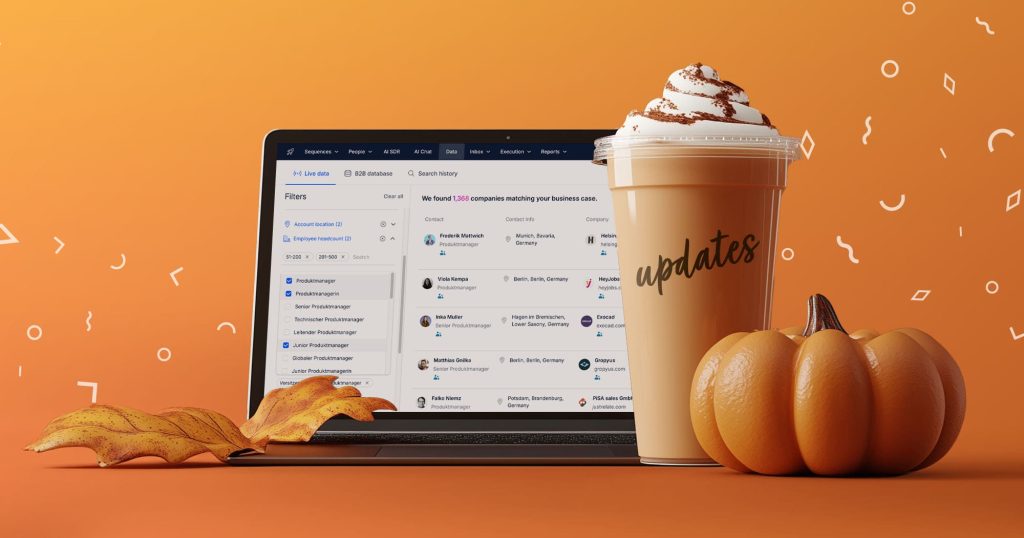Launching a cold email campaign, you have to expect the unexpected. The vast majority of responses that you get from potential clients will send mixed signals, and only few will be a definitive “yes”. How do you know which replies are a sign of opportunity, and which ones represent sales leads that you should let go of? I’ve prepared 8 common examples of cold email replies, with short guides on how to deal with them. Here are 8 common responses to cold emails to help you tell which ones are really worth pursuing:
1.“We can’t afford your products/services”
If a company has no cash to invest in your product right now, what are the odds that they’ll have funds in 6 months? That’s right, very low. Unless you’ve got solid proof that their financial situation is about to change, like a 100% secure funding, don’t waste your time on chasing the lead further. If the company cannot back up that promised inflow of cash, it doesn’t bode well for your future dealings. Cut this lead off and spare yourself the trouble.
2.“We don’t even have a website”
Implementing a website usually takes way longer than expected. Most of the time, I get pushed back when I follow up on schedule. If you manage to schedule a follow-up, be patient and wait for the right occasion to strike again. But if you can’t even agree on that, better let this one go.
People give me different reasons for why they need to wait for making any decisions. The website might not look good enough or lack some key content optimization and translation. If you try to convince them that they take such problems too seriously, they’ll either continue the conversation or just drop all communications with you. If you manage to convince them about this, push to schedule a meeting in the future and you’ll be on your way to making the most from this lead.
3.“We don’t see what’s the benefit of this”
If you get that kind of response, it’s a sign that this lead doesn’t really fit your customer profile and has low priority to begin with. If you see a good reason why they might fit into your customer profile in the near future, try to schedule a call. Sometimes this part can get troublesome – if that’s the case, better cut off this lead.
4.“We don’t have time/capacity to deal with this”
Everyone is busy these days, so this reason is something you can easily negotiate with. If you get the “not enough time/super busy” kind of response, pick up the phone and call this person. Say something along these lines: “I didn’t want to waste your time replying to my email, so I decided to call – it will take just 3 minutes of your time”. Use these minutes well to qualify the lead and schedule a meeting.
5.“I’m gonna sue you for spamming me”
How to deal with this kind of passive aggressive response? Unless you really provoke them, people have no reason to pull the big guns on you and seriously threaten you with a lawsuit. But it doesn’t mean that you should avoid responding to such a message.
Before replying, consider one thing. Was your outreach based on a simple untargeted and unsegmented list of prospects? If that’s the case, apologize and hope for the best – it’s your job to target the right people.
But what if you did your best with targeting, polished your message with killer copy and still got that kind of response? It’s best to apologize, promise not to bother that person again and say that you had no harmful intention in reaching out to talk about a mutually beneficial business relationship.
6.“I’m not interested”
Pay attention to the tone of this message – this is what will lead you in responding. If it’s positive, use this occasion to ask for feedback about your sales process – like whether you targeted the right person, or you email was of high quality.
When asking prospects to do something for you, you should give them something in return, even if it’s a solemn promise that you’ll never bother them again in the future (like “One last question and I will never annoy you again”).
7.“F* you!”
You’ll get this kind of response sooner or later. It’s a sign that the prospect has been under lots of pressure lately and your email simply offered them an opportunity to vent. Since you’re the one who reached out to them, you should take responsibility for it and respond. Sometimes it’s best to settle for an apology and get over with it. It’s normal to get responses like these from time to time, but if you keep getting a lot of them, you’re definitely doing something wrong.
8.“I’ll do X if you do Y”
If you get a challenging response, don’t take it as a “yes” – most of the time, it ends up meaning “no”. Even if it shows a glimmer of interest, you should still think twice before wasting your time on it. It’s not like you can change your entire business model to land one client. That is, unless you’re dealing with a very influential customer or see a potentially huge deal on the horizon.
If you agree to this challenge, it’s going to cost you – and you can’t be sure that the reward will make up for it. Making a mistake here can have serious consequences on your workflow later on. That’s why in most cases, engaging in this kind of conversation isn’t worth your time. Unless you stumbled upon a client who can deliver a big value in return, better focus on other leads you could be talking to instead.
Keep on qualifying leads
If you think accelerating your sales process means increasing the number of closed deals, you’re making a mistake. Great sales is about boosting the number of those amazing deals where you get to work with great business partners.
That’s why you should focus on finding the right partners for your business, and not on keeping cash flowing in. You can be sure that over time, your engagement will generate a bigger value.
Don’t hesitate to drop leads that show no promise. It will help you to relieve some of the pressure and significantly boost your sales performance.
by Piotr Zaniewicz
CEO @ RightHello





